One of the interesting markers at one of the old cemeteries in the City of Los Angeles. I’m not sure if the headstones behind it are ITU members, but they tended to have dates in the late 1800s to early 1910s.
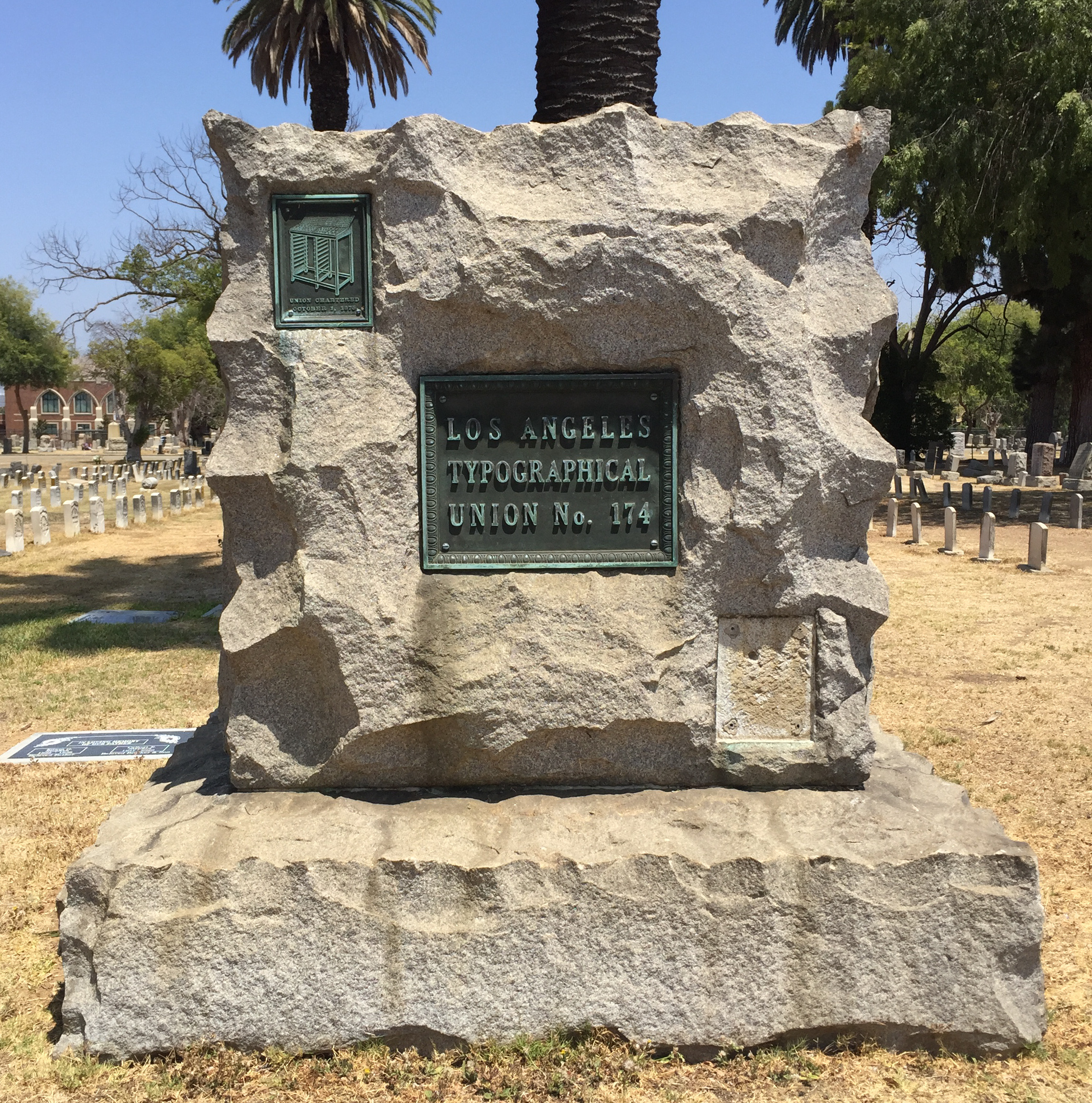
Perhaps the most famous, or infamous, member of the ITU was James B. McNamara. I’m not certain if he was a member of the local, but he was associated with the ITU, and he did bomb the LA Times, which ITU 174 was boycotting, on and off, in the late 1800s.
James B. McNamara at Spartacus – this article gets into the LA Times bombing and its effects in the US. After the bombing, Los Angeles became a lot harder to organize into unions. I wonder if things stayed that way until the rise of the CIO in the 1930s.
The Bombing of the Los Angeles Times
From the footnotes at the Samuel Gompers Papers:
On Oct. 1, 1910, an explosion and fire killed twenty people and destroyed the Los Angeles Times building. Calling it “the crime of the century,” the newspaper’s proprietor Harrison Gray Otis blamed the disaster on organized labor, a charge denied by trade unionists. In April 1911, however, James McNamara and his brother John, secretary-treasurer of the International Association of Bridge and Structural Iron Workers, were arrested for the Times dynamiting–James in Detroit and John in Indianapolis–and charged with murder; John was also charged with involvement in the Dec. 25, 1910, dynamiting of the Llewellyn Iron Works in Los Angeles.
The McNamaras were taken to Los Angeles and imprisoned; on July 12, 1911, they pleaded not guilty to the charges against them. James McNamara’s trial began on Oct. 11 and for many weeks focused on jury selection. Then, on Dec. 1, in an arranged settlement, James McNamara pleaded guilty to the murder charge and John McNamara pleaded guilty to conspiracy in the dynamiting of the Llewellyn Iron Works.
Samuel Gompers Papers footnotes – http://www.gompers.umd.edu/fnnp.htm
ITU 174’s boycott against the LA Times
On Aug. 5, 1890, the Los Angeles Times locked out members of International Typographical Union (ITU) 174 after they refused to accept a 20 percent reduction in wages. The union and the Times reached a settlement in April 1892, but the Times repudiated the agreement, and the union called a new strike on Sept. 27, 1893. ITU 174 conducted an intermittent boycott against the Times, and the AFL carried the paper on its “We Don’t Patronize” list from 1896 to 1899 and from 1902 to 1908. The campaign languished until 1903, when the ITU assessed its entire membership throughout the year to continue the contest. While a local anti-Times committee effectively discouraged out-of-town firms from advertising in the Times, the paper sustained its local advertising with the assistance of the local citizens’ alliance. The anti-Times committee did convince William Randolph Hearst to start a rival union paper, the Los Angeles Examiner, in December 1903, and within a short time this paper outstripped the Times in advertising and circulation. Although the ITU kept up the fight into the 1920s, it was unable to unionize the Times.
Samuel Gompers Papers footnotes – http://www.gompers.umd.edu/fnnp.htm
History
https://en.wikipedia.org/wiki/International_Typographical_Union – founded in 1852, the ITU, aka typesetters, rose with the rise of the newspapers and was part of the AFL. They were one of the first unions to accept women as members. As print technology eliminated jobs, and as newspapers declined due to competition from radio and television news, they eventually merged with the Communication Workers of America (CWA).
Typesetting was originally done by hand, arranging small bits of type, metal blocks with a single letter on it, into a line, and composing the lines into a page layout. The page would that would then be used to print newspaper pages.
The Mergenthaler linotype machine eliminated manual typesetting – with this machine, an entire line of type was arranged by using a machine, and then hot lead was forced into the type, to cast a fresh line of type. These lines would be arranged into a page layout.
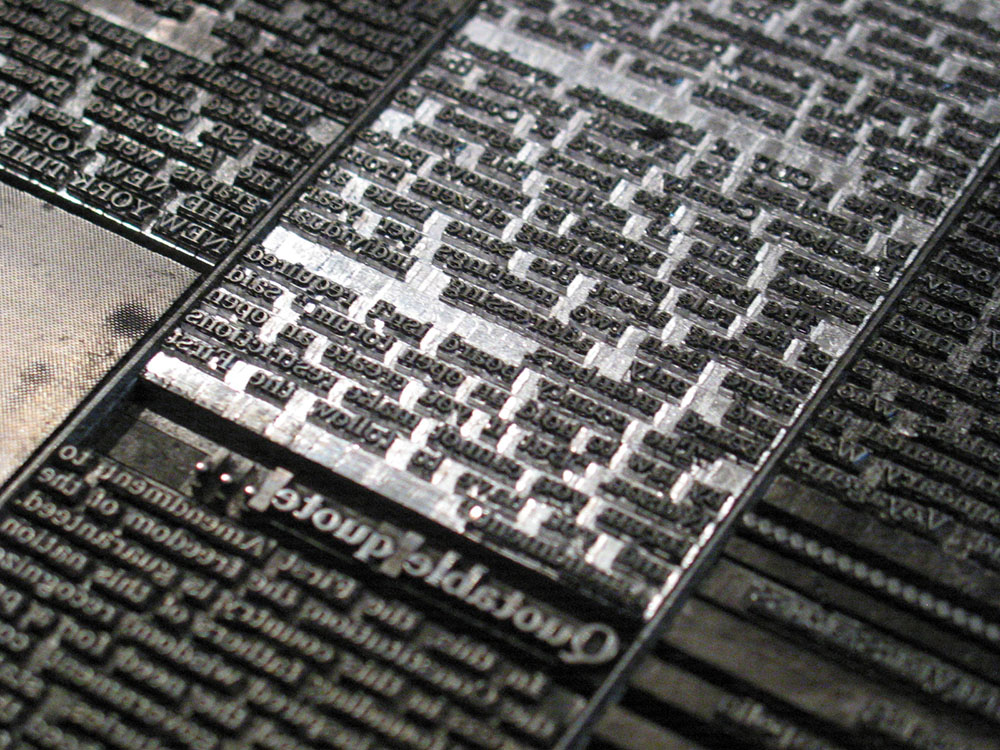
Later, the metal type would be eliminated entire, as phototypesetting, a photographic and chemical process, came to dominate. A phototypesetter has fonts on rolls of film, and “type” is “set” by exposing a large sheet of photographic film, one letter at a time, to produce a photograph of a block of type. That photo is then used to produce a printed typeset article. This is all coordinated by a computer.
The bits of paper would be cut up, and paste into a page layout. That layout would be transferred to film, and the film image transferred onto a print drum, to print the pages. So the entire process by the 1970s had become largely photographic.
Photo film gave way to digital technology, with techniques like using cathode ray tubes to expose type onto film, and, later, the laser printer, which uses a laser beam to charge a print drum so toner would adhere to it.
The PC (Mac really) and desktop publishing with the laser printer basically ended manual typography. The ITU, already in decline for decades due to changed in technology, and with only 44,000 members, merged with the CWA in 1987.
By this time, newspapers themselves had gone into decline. The LA Times had only one rival, the Herald-Examiner, where once there were around five daily papers for the white/general audience. You had The Herald, The Examiner, The Mirror, The Daily News, and the Times. (Before anyone starts to wax nostalgic about newspaper diversity: there was only one Democrat and integrationist paper, the Daily News, aka the peach, for it’s pink pages; papers were generally conservative, Republican, and pro-business. Other small dailies existed, but for niche audiences, like the many ethnic groups, Communists, religious sects, etc.)
Eventually, in 1989, the Herald-Examiner would be bought by the Times-Mirror company. The LA Times newsroom was still not a union shop, though I think the printing and mailing operations were. It would become one in 2021 during the COVID-19 pandemic, even as newspapers continued to decline in circulation, quickly being overtaken by social media and internet-based news outlets. The establishment of the News Guild at LAT was part of a wave of labor organizing spurred by the huge social changes wrought by the COVID-19 pandemic, and continues today.
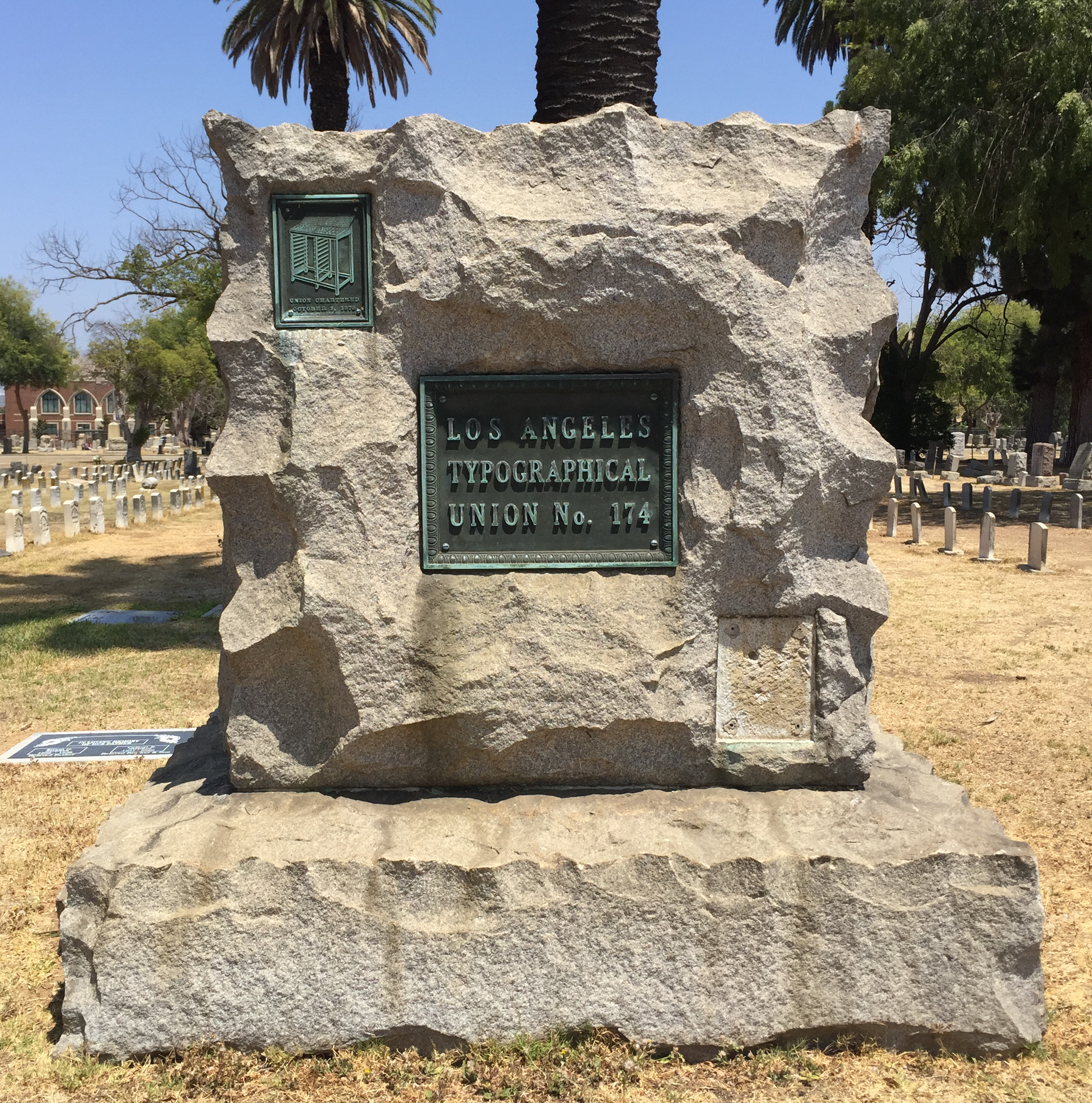



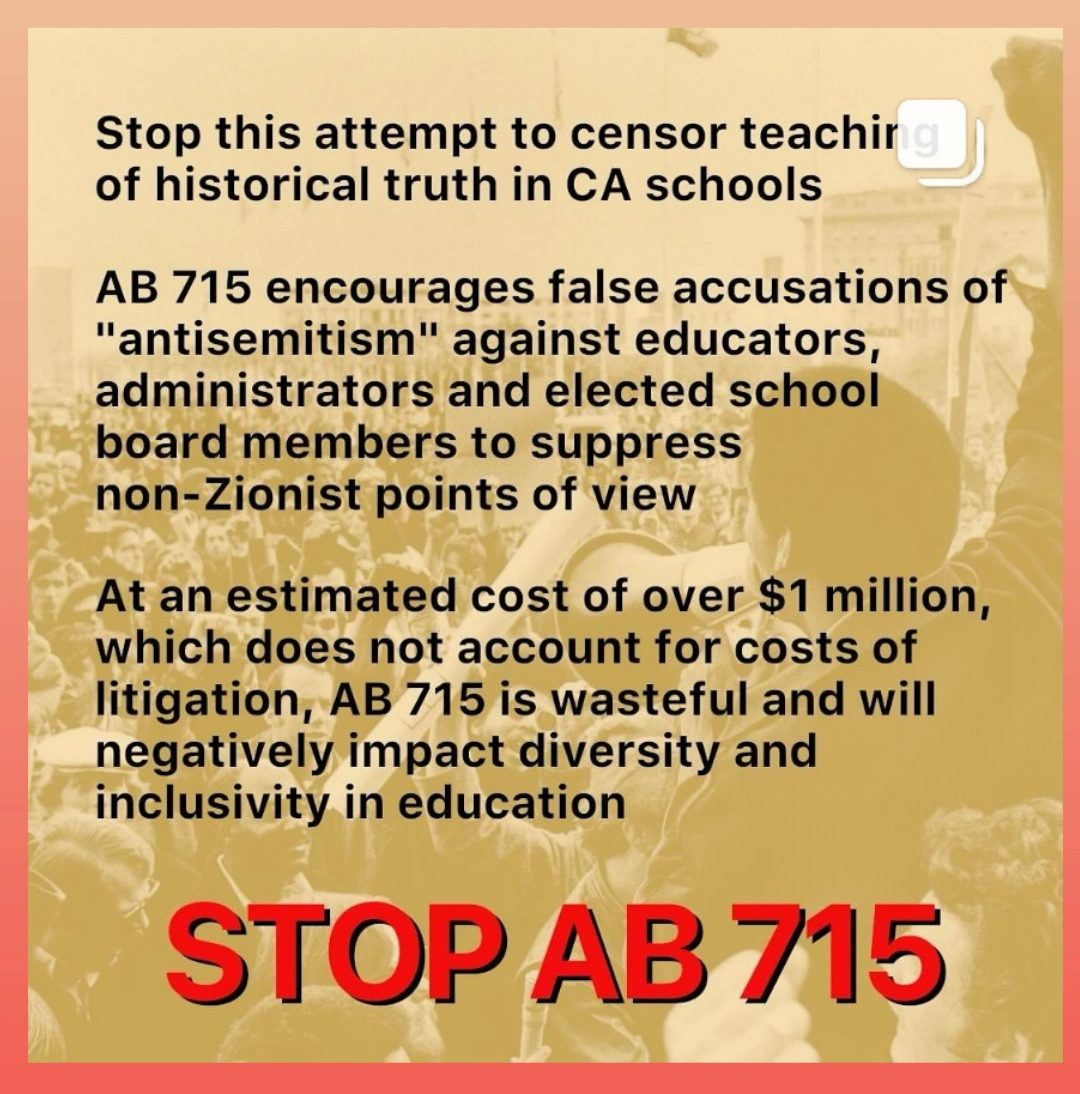
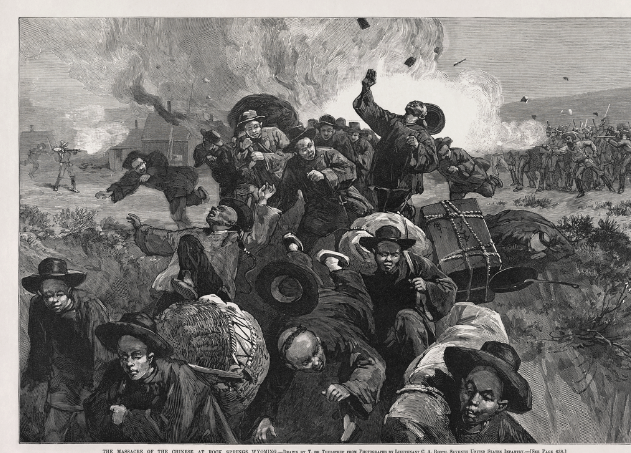


Leave a Reply